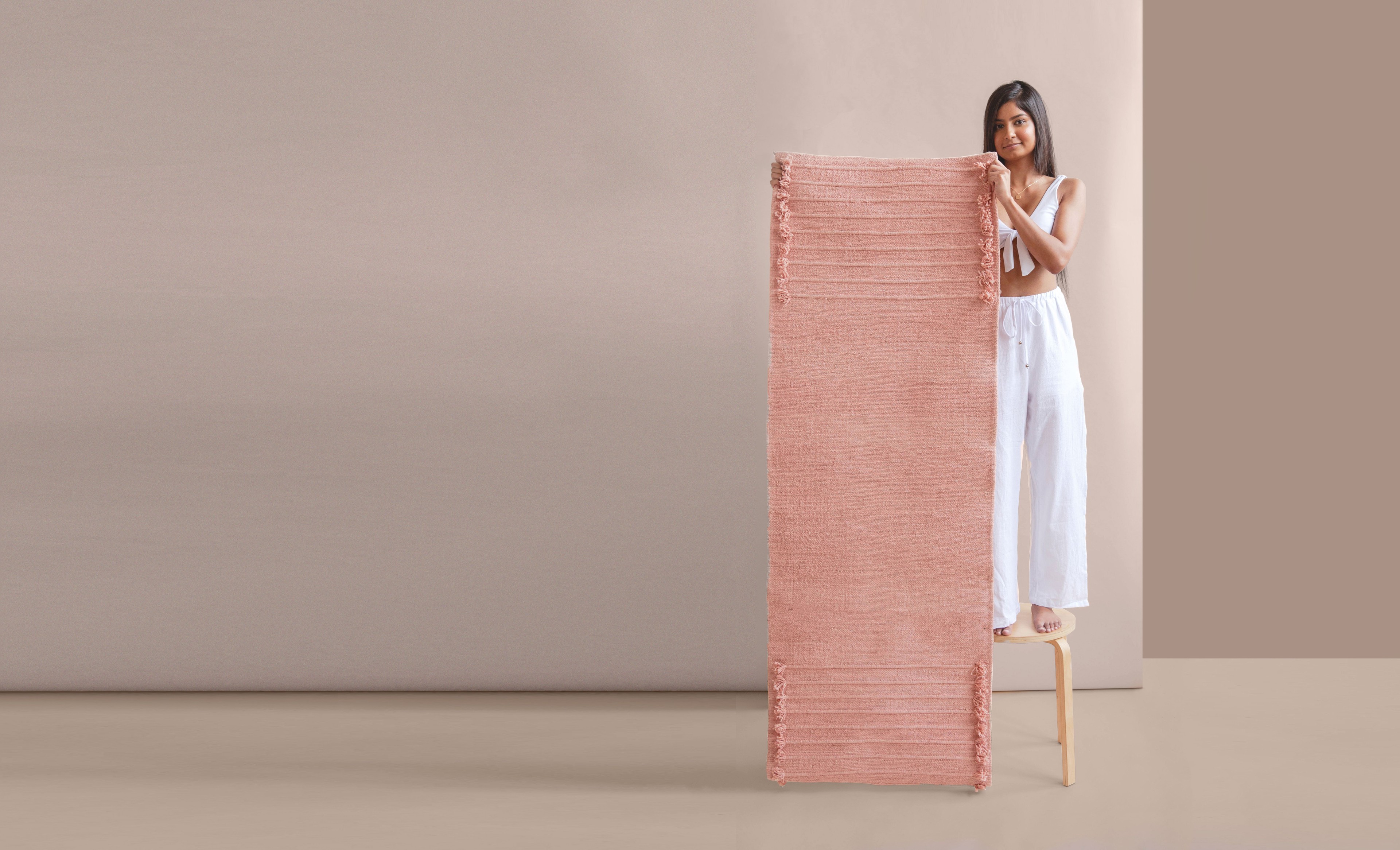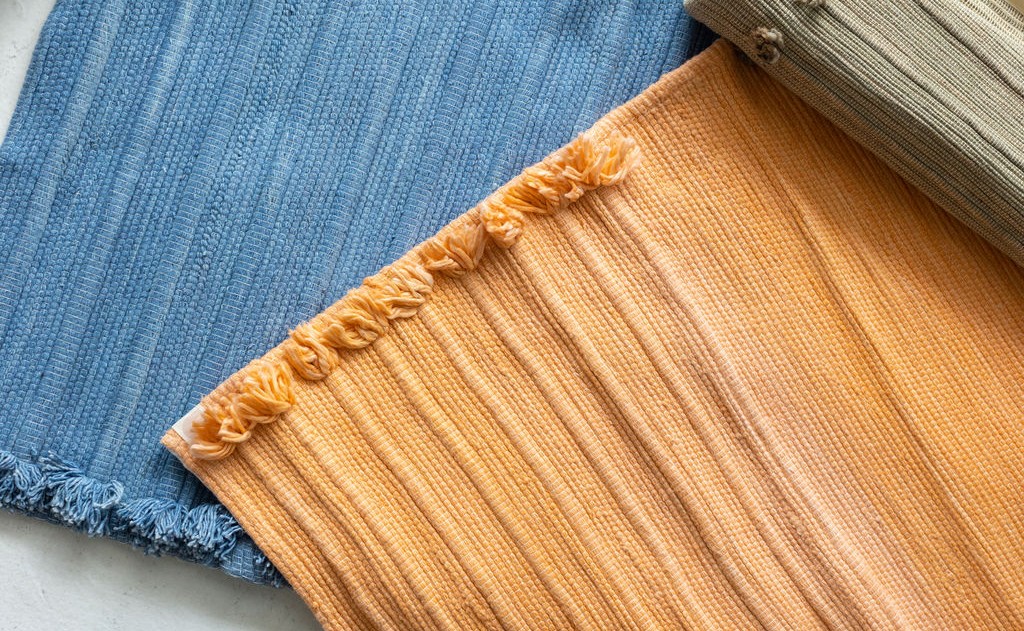How to Choose the Perfect Sustainable Yoga Mat for Your Practice

Are you a yoga enthusiast looking for the perfect sustainable yoga mat? Look no further! In this article, we will guide you through the process of choosing a yoga mat that aligns with your values and supports your practice. Whether you're a seasoned yogi or just starting, finding the right mat is essential for a comfortable and sustainable practice.
While many options are available on the market, not all yoga mats are created equal. We will discuss critical factors to consider, such as material, thickness, grip, and sustainability. By investing in a sustainable yoga mat, you can positively impact the environment while enjoying your yoga practice to the fullest. Join us as we explore the world of sustainable yoga mats and help you find the perfect one for your needs.
The importance of choosing a sustainable yoga mat
Yoga is not just about physical exercise; it's also about living in harmony with the environment. That's why choosing a sustainable yoga mat is crucial. Modern yoga mats are made with PVC, a synthetic material that harms the environment and your health. By opting for a sustainable yoga mat, you can minimize the negative impact on the planet and enhance your yoga experience.
A sustainable yoga mat is made from natural materials that are biodegradable, renewable, and free from harmful chemicals. These mats are often produced using eco-friendly manufacturing processes that conserve resources and reduce pollution. When you choose a sustainable yoga mat, you're making a conscious decision to support your health and that of the planet.
Sustainable yoga mats are not only better for the environment but also for your overall well-being. They are typically free from toxins, such as phthalates and heavy metals, which can be absorbed through your skin during practice. These mats often have better grip and cushioning, providing a safer and more comfortable practice.

What makes a yoga mat sustainable?
To determine whether a yoga mat is genuinely sustainable, there are a few key factors to consider:
Material
The material used to make the yoga mat is the most crucial aspect of sustainability. Look for mats made from natural materials like cotton, cork, or jute. These materials are biodegradable, renewable, and non-toxic. Avoid mats made from PVC, which harms the environment and your health.
Thickness
The mat's thickness is a personal preference, but it's also important to consider the environmental impact. Thicker mats tend to be more durable and longer-lasting, reducing the need for frequent replacements. However, remember that thicker mats may be heavier and less portable.
Grip
The grip of a yoga mat is crucial for stability and safety during your practice. Look for mats with a textured surface or a non-slip coating to prevent slipping and sliding. Some sustainable mats have a natural grip that improves with moisture, providing better traction as you sweat.
Sustainability Certifications
Check if the yoga mat has any sustainability certifications, such as the Global Organic Textile Standard (GOTS) or the Forest Stewardship Council (FSC) certification. These certifications ensure that the mat meets specific environmental and social criteria, giving you confidence in your purchase.
Benefits of using a sustainable yoga mat
Using a sustainable yoga mat offers numerous benefits:
Environmental Impact
By choosing a sustainable yoga mat, you reduce your carbon footprint and minimize waste. These mats are made from renewable resources and biodegradable materials, ensuring they won't end up in landfills for hundreds of years. Additionally, many sustainable mat brands also offset their carbon emissions and support reforestation projects.
Health Benefits
Sustainable yoga mats are free from harmful chemicals, such as phthalates and heavy metals, which can be absorbed through your skin during practice. These mats are also hypoallergenic, making them suitable for people with allergies or sensitivities. A sustainable mat allows you to breathe easily and focus on your practice.
Durability
Sustainable yoga mats are often more durable than their synthetic counterparts. They can withstand daily use and retain their shape and grip for years. Investing in a high-quality, sustainable mat means you won't have to replace it as often, saving you money and reducing waste.
Comfort and Performance
Many sustainable mats offer superior cushioning and grip, providing a comfortable and stable practice. The natural materials used in these mats often have moisture-wicking properties, keeping you dry and preventing slippery situations. With a sustainable mat, you can enhance your practice and explore more challenging poses with confidence.

Different types of sustainable yoga mats
There are several sustainable yoga mats to choose from, each with unique characteristics. Here are a few popular options:
Cork Mats
Cork mats are made from the bark of cork oak trees, which can be harvested without harming the tree. These mats are naturally antimicrobial, hypoallergenic, and offer good grip. Cork mats are also lightweight and provide excellent insulation, making them a great choice for outdoor and travel yoga.
Jute Mats
Jute mats are made from the fibers of the jute plant, a sustainable crop that requires minimal water and pesticides to grow. These mats have a natural grip that improves with moisture, making them perfect for sweaty practices. Jute mats are also lightweight and offer good cushioning.
Organic Cotton Mats
Organic cotton mats are made from pesticide-free cotton, making them safe for you and the environment. These mats are soft, comfortable, and suitable for gentle yoga practices. Cotton mats also encourage you to develop your strength, since there's no artificial grip added to the surface. If you're interested in trying an organic cotton yoga rug, check out Öko Living, voted the #1 most sustainable yoga mat by Yoga Journal.
Factors to consider when choosing a sustainable yoga mat
When selecting a sustainable yoga mat, keep the following factors in mind:
Your Practice Style
Consider the type of yoga you practice and choose a mat that suits your needs. If you practice hot yoga or tend to sweat a lot, opt for a mat with excellent grip and moisture-wicking properties. If you prefer gentle yoga or meditation, a softer mat with less grip may be more suitable.
Thickness and Weight
Think about the portability and storage of your mat. Thicker mats offer more cushioning but can be heavier and less portable. Thinner mats are lightweight and easy to carry but may not provide as much cushioning. Find a balance between comfort and convenience that works for you.
Budget
Sustainable yoga mats can vary in price, so consider your budget when making a purchase. Investing in a high-quality mat may save you money in the long run, as it will last longer and require fewer replacements.
Sustainability Credentials
Check if the yoga mat has any sustainability certifications or if the brand is transparent about its manufacturing processes. Look for brands that use eco-friendly materials, practice fair trade, and give back to environmental causes.

How to care for and maintain a sustainable yoga mat
Proper care and maintenance are essential to ensure the longevity of your sustainable yoga mat. Here are a few tips:
1. Clean your mat regularly with a mild, natural cleaner or a mixture of water and vinegar. Avoid using harsh chemicals that can degrade the mat's material.
2. Allow your mat to air dry after each use. Avoid direct sunlight, which can cause the mat to fade or become brittle.
3. Roll up your mat rather than folding it to prevent creases and damage.
4. Avoid leaving your mat in extreme temperatures, such as a hot car or cold room, as it can affect its durability.
5. If your mat becomes excessively worn or damaged, consider recycling it through a mat recycling program or repurpose it for other uses, such as a non-slip surface in drawers or shelves.
Where to buy sustainable yoga mats
Sustainable yoga mats are available from various retailers, both online and offline. Here are a few places to consider:
1. Yoga and wellness stores: Visit your local yoga studio or wellness store to see if they carry sustainable yoga mats. This allows you to see and feel the mats before purchasing.
2. Online marketplaces: Websites like Amazon, REI, and YogaOutlet offer various sustainable yoga mats from different brands. Read reviews and compare prices to find the best option for you.
3. Directly from the brand: Many sustainable yoga mat brands have their own websites where you can purchase directly from them. This ensures that you're getting an authentic product and allows you to support the brand directly.
Finding the perfect sustainable yoga mat for your practice
Choosing a sustainable yoga mat protects the environment and enhances your yoga experience. By considering material, thickness, grip, and sustainability factors, you can find a mat that aligns with your values and supports your practice.
Investing in a sustainable yoga mat offers numerous benefits, including a reduced carbon footprint, improved health, durability, and enhanced comfort and performance. With so many options available from reputable brands, finding the perfect sustainable yoga mat has never been easier.
So, take the time to research and explore different options, read reviews, and consider your specific needs and preferences. By investing in a sustainable yoga mat, you can positively impact the environment while enjoying your yoga practice to the fullest.
